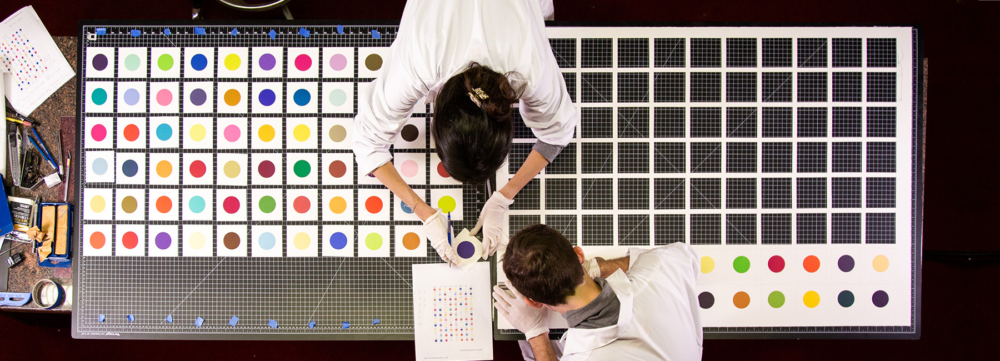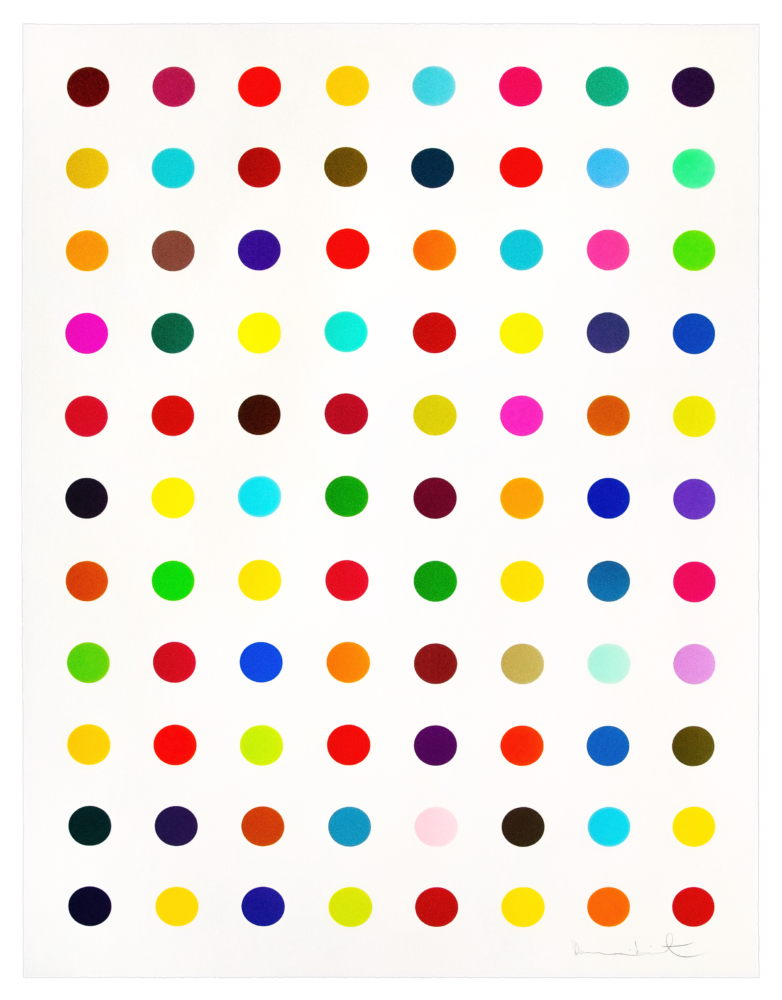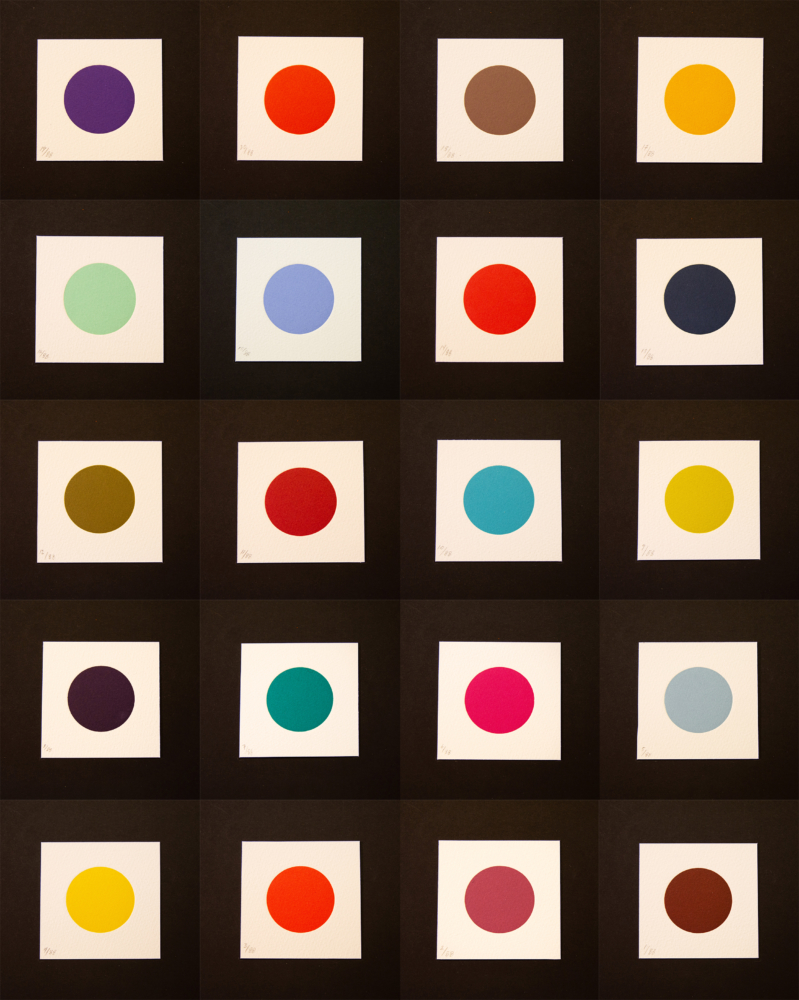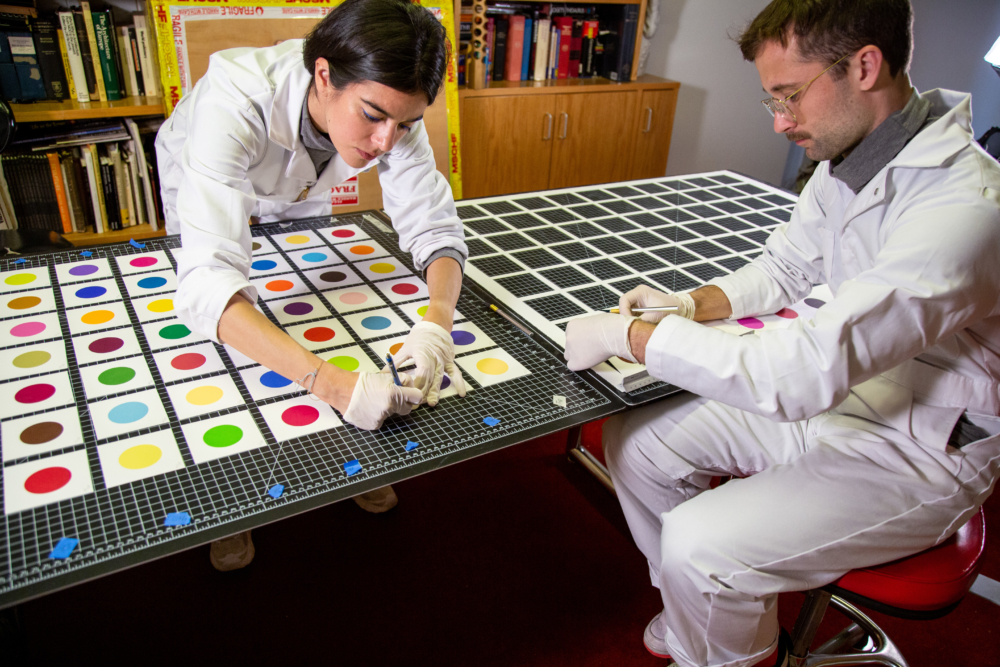How to Make Money Destroying the Work of Damien Hirst
“Next to the bomb,” Donald Judd wrote, “the bulldozer is the most destructive invention of this century.” But what about a website and an X-Acto knife? Anarchy and iconoclasm have long been potent forces in the art world, but lately no group of agitators has made as much exhilarating trouble as the Brooklyn-based collective MSCHF. Last year, for their inaugural project called The Persistence of Chaos, they loaded six of the world’s most dangerous cyber viruses onto a laptop, creating something of an apocalyptic tempest inside an electronic teacup, and their ensuing projects—each one hilarious, scandalous, and an act of genius—have challenged the default running systems of fashion, art, tech, and novelty capitalism. Their latest, “Severed Spots,” takes direct aim at the art market.
This past month, the 10-person team behind MSCHF purchased one of Damien Hirst’s famous spot-painting prints, “L-Isoleucine T-Butyl Ester,” for $30,485 from a reputable New York gallery. They then proceeded to cut out each of the 88 spots using an X-Acto knife and a ruler, in a sense subdividing the valuable real estate that is a hallowed Hirst artwork, and selling the dots individually for $480 each on their website.
Does this act represent the democratization and liberation of art? Or the destruction of a masterwork for cheap carnivalism and quick financial gain? That depends on how you gauge the value not only of a Damien Hirst in the current art landscape, but also the ingenuity of MSCHF to beat the system at its own game. Lukas Bentel, one of the group’s creative directors who in fact performed the elective surgery on the original print, recalls the gallery telling them, “‘This piece will definitely appreciate in value in the next few years.’ We thought we’d speed that up a little faster.” Their gamble of chopping up a Hirst could have been tantamount to burning money. Instead, they sold all of the dots within 10 minutes, netting a tune of $42,240. (That’s a profit of $11,755 not including labor, shipping, and supplies.) It also allowed an entire swath of the art-loving public usually shut out from the elitist art market—from diehard Hirst enthusiasts to a mother looking for a graduation gift for her daughter—to have an original remastered artwork all to themselves. The white negative space of the paper around the dots, that includes Hirst’s signature, is now up for auction on the MSCHF website, with a current bid of $144,250.
Kevin Wiesner, another creative director at MSCHF, sees the project as something akin to a chess move. “It doesn’t matter if you are a fan of Damien Hirst or not,” he says. “You have to acknowledge how well he’s played the game. He and Jeff Koons are poster children for how to merchandise an art career.” Wiesner points out the irony in that Hirst’s early work was so uncompromising in its assault of the reigning art-world structures, only to leverage that reputation into making slick, endlessly reproducible pieces that cater to the aesthetics of the wealthiest collectors. “He was capitalizing on his own notoriety,” Wiesner says. So far, they have not heard Hirst’s take on the project. But in an interesting twist, some of MSCHF’s spot purchasers have already resold their new acquisitions for a profit on eBay.










